 W
WBillpoint was the name of a person-to-person money transfer service founded in 1998 and purchased in 1999 by online auctioneer eBay.
 W
WThe Casa de Moneda de Colombia is a Colombian currency museum based in the city of Bogotá. It was founded in 1621 as the mint. The current mint is known simply as the Fábrica de Moneda.
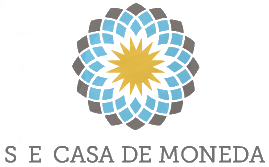 W
WThe Casa de Moneda de la República Argentina is the Argentine mint, controlled by the Argentine government and administratively subordinated to the Ministry of Economy. A mint was established in 1779, before Argentina became independent. Law 733 of 1875 ordered the creation of two mints, one in Buenos Aires and another in Salta; the Casa de Moneda in Buenos Aires was opened on 14 February 1881, with ingeniero (engineer) Castilla as director and John Joseph Jolly Kyle as chief chemist.
 W
WA change machine is a vending machine that accepts large denominations of currency and returns an equal amount of currency in smaller bills or coins. Typically these machines are used to provide coins in exchange for paper currency, in which case they are also often known as bill changers.
 W
WThe coinage in the Kingdom of Hungary started during the reign of Stephen I who was crowned the first king of Hungary in 1000 or 1001.
 W
WA contorniate, or contourniate, is a type of ancient Roman medal or medallion of bronze issued in the fourth and fifth centuries CE, having a deep furrow on the contour or edge, as if the object had been turned in a lathe. The extant contorniates show portraits of various earlier emperors or of cultural figures such as Homer, Solon, Euclid, Pythagoras, Socrates, Sallust, Apollonius Tyaneus, and Apuleius, as well as athletes, whose victories are symbolized by palm leaves and chariots, either bigae or quadrigae. The medals were not used as currency, but may have been distributed as New Year's gifts in association with public spectacles, including chariot races and pantomime.
 W
WCunliffe, Brooks and Co. was a bank founded in Blackburn, Lancashire, England in 1792.
 W
WA donation box or collecting box is a receptacle for receiving donations. These are typically found in public places, as a means of generating additional revenue in small increments. Churches, libraries, museums, and many non-profit organizations make use of donation boxes.
 W
WDoshTracker is a currency bill tracking website that allows pound sterling banknotes to be tracked around the United Kingdom and abroad. Originally launched in 2001, it was relaunched in 2012.
 W
WThe South African financial rand was the most visible part of a system of capital controls. Although the financial rand was abolished in March 1995, some capital controls remain in place. These capital controls are locally referred to as "exchange controls", although the system has since 1995 moved towards surveillance — recording and reporting to the authorities of foreign currency transactions — rather than control.
 W
WThe five lei banknote is one of the circulating denomination of the Romanian leu. It is the same size as the 1 Euro banknote.
 W
WGettone means "token" in Italian. More specifically, the word gettone can be used to refer to the gettone telefonico, which was used during much of the 20th century in Italian phone booths.
 W
WThe grzywna was a measure of weight, mainly for silver, commonly used throughout medieval central and eastern Europe, particularly in the Kingdom of Poland and Kingdom of Bohemia.
 W
WThe Imprensa Nacional-Casa da Moeda, is the Portuguese mint and national press, owned by the Portuguese Government and administratively subordinated to the Portuguese Ministry of Finance. It is located in Lisbon in the São Mamede neighborhood.
 W
WLabor notes are an alternative currency based on exchange of hours of labor. Two early attempts at implementing labor notes were made by social reformers Josiah Warren and Robert Owen following their experiences attempting to establish a utopian community at New Harmony, Indiana in which currency was prohibited.
 W
WThe scudo is the official currency of the Sovereign Military Order of Malta and was the currency of Malta during the rule of the Order over Malta, which ended in 1798. It is subdivided into 12 tarì, each of 20 grani with 6 piccoli to the grano. It is pegged to the euro.
 W
WThe peso was a promissory note which was issued on the Falklands Islands by Luis Vernet from around 1828 until the collapse of his settlement in August 1833. Vernet, who was appointed Governor by the United Provinces of the River Plate in 1829, paid workers on the islands in these promissory notes.
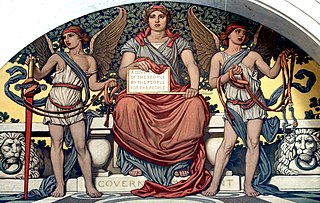 W
WIn finance and economics, a monetary authority is the entity that manages a country’s currency and money supply, often with the objective of controlling inflation, interest rates, real GDP or unemployment rate. With its monetary tools, a monetary authority is able to effectively influence the development of short-term interest rates, but can also influence other parameters which control the cost and availability of money.
 W
WThe monetary reform in the Soviet Union of 1947 was carried out during December 16–19, 1947. It was the second Soviet monetary reform. At the same time the post-World War II rationing system was discontinued. The reform was a combination of denomination and confiscation, the latter depending on the amount exchanged and whether the monies were kept at sberkassa or not. State bonds were exchanged as well, under more favorable rules of denomination. The confiscative character was attributed to large amounts of counterfeit money produced by Nazi Germany, as well as to the desire to devalue the savings of the profiteers.
 W
WA monetary reform of the Soviet ruble, also known as the Khrushchev reform, took place on 1 January 1961. The reform consisted of the devaluation of the ruble against the United States dollar, and the redenomination of the ruble at a ratio of 10 to 1.
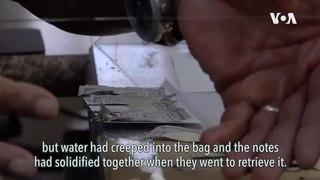 W
WMutilated currency is a term used by the United States Bureau of Engraving and Printing (BEP) to describe currency which is damaged to the point where it is difficult to determine the value of the currency, or where it is not clear that at least half of the note is present. Common causes of damage are fire, water, chemicals, explosives, animals or damage from extended burying of the currency.
 W
WAbraham Newland was the chief cashier at the Bank of England from 1782 to 1807. The expression "an Abraham Newland" came to mean a bank note, because without his signature on a Bank of England note was genuine.
 W
WOptically variable ink (OVI) also called color shifting ink is an anti-counterfeiting measure used on many major modern banknotes, as well as on other official documents.
 W
WPingit, formerly Barclays Pingit, is a system for the mobile transfer of money in the United Kingdom. It was launched by Barclays in February 2012 and was initially only available for use by Barclays current account holders, who were over the age of 18, for the sending and receiving of payments. This was later extended to all UK current account holders and the age limit was dropped to 16. The application used for Pingit is currently available on iOS and Android.
 W
WThe Mint of Poland is a private company which is the only body permitted to manufacture (mint) coins and investment products in Poland. It is located in Warsaw. It is a joint-stock company, with a listing on the Warsaw Stock Exchange since April 7, 1998, which makes it the only mint in the world that is publicly traded.
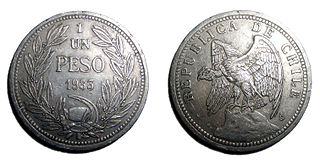 W
WReal de alerce or real de madera was a local currency consisting in Fitzroya wood that was used during colonial times in Chiloé Archipelago. It was the Jesuits, established in Chiloé since the 17th century that established Fitzroya as a major export product towards the Viceroyalty of Peru. Real de alerce was also used by some encomenderos to pay their taxes.
 W
WIn Japanese, saisen (賽銭) is money offered to the gods or bodhisattvas. Commonly this money is put in a saisen box , a common item at Shinto shrines and Buddhist temples in Japan.
 W
WStella quarta decima is a motto appearing on Vermont copper coinage struck in 1785 and 1786. The coins were issued during the period when Vermont was an independent state (1777–1791), sometimes referred to as the Vermont Republic.
 W
WThe Swiss Numismatic Society (SNS) was founded in 1879 and is a registered non-profit organization. It is the overall Swiss association of individuals and institutions with an interest in ancient and modern numismatics.
 W
WThe ten lei banknote is one of the circulating denomination of the Romanian leu. It is the same size as the 20 Euro banknote.
 W
WThe tiền was a currency used in Vietnam during the 19th and 20th centuries. The name is a cognate with the Chinese qián (錢), a unit of weight called "mace" in English.
 W
WTrade beads were otherwise decorative glass beads used between the 16th and 20th century as a token money to exchange for goods, services and slaves. Trade beads were used to purchase African resources by early Europeans. This included African slave trade. The beads were integrated in Native American jewelry using various beadwork techniques. Aggry beads are a particular type of decorated glass bead from Ghana.
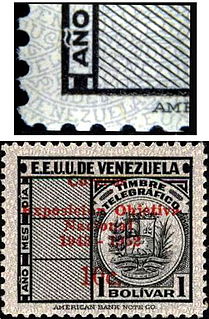 W
WAn underprint is anything printed underneath the main design of a stamp, banknote or similar item. Underprinting is used as a security measure to prevent forgery, or the cleaning of a postmark from a used stamp. The most common form of underprinting is burelage which takes the form of a faint pattern of lines or dots. Underprinting may also take the form of single or repeating words, for instance the word CUSTOMS at one time appeared underprinted on British revenue stamps.